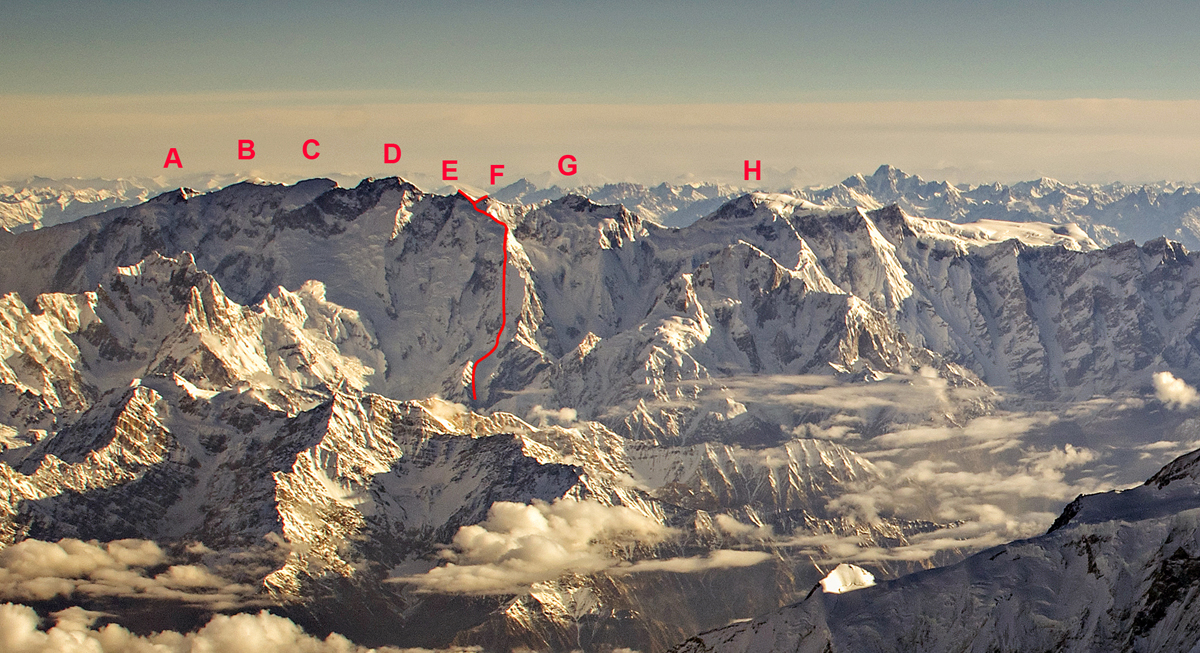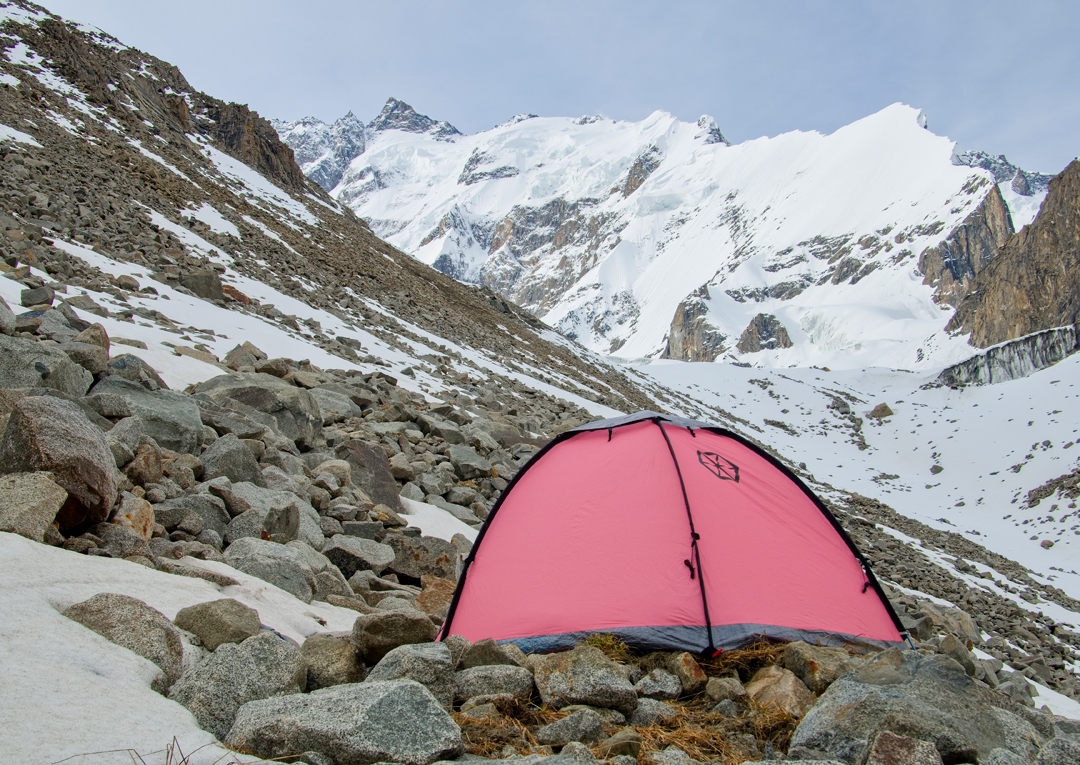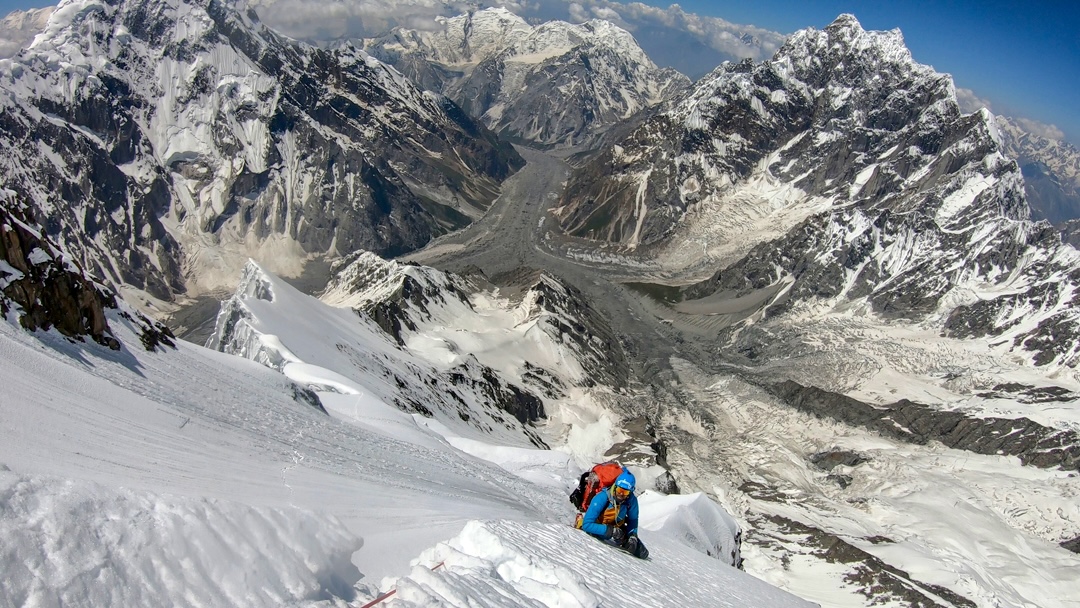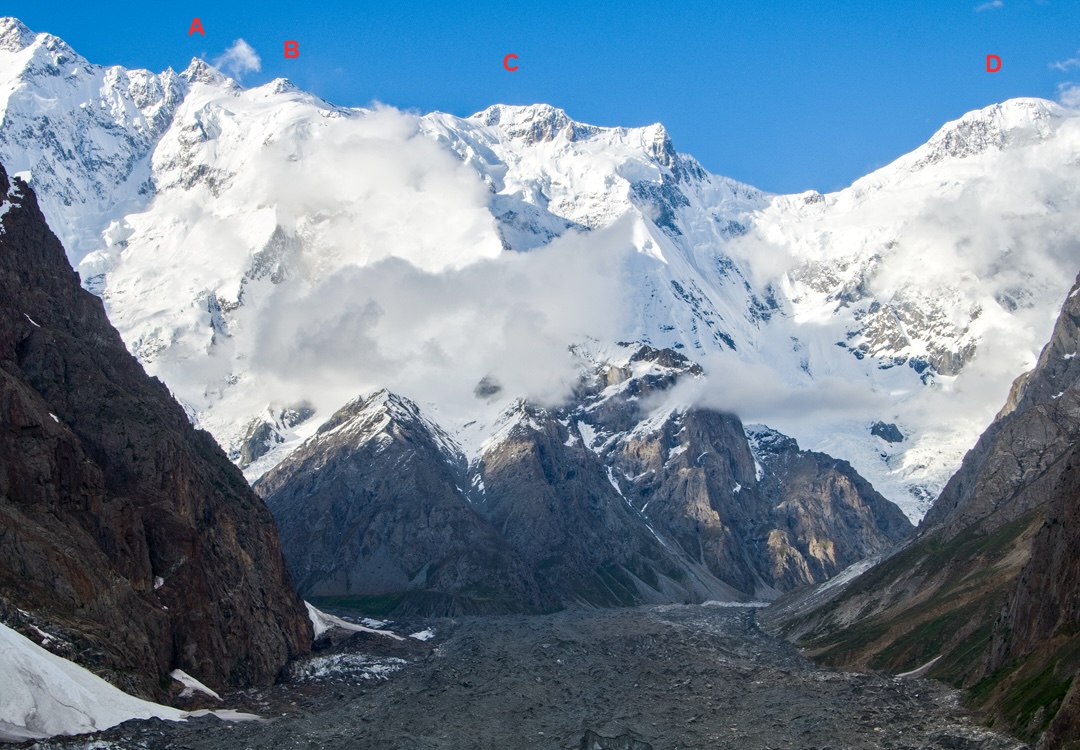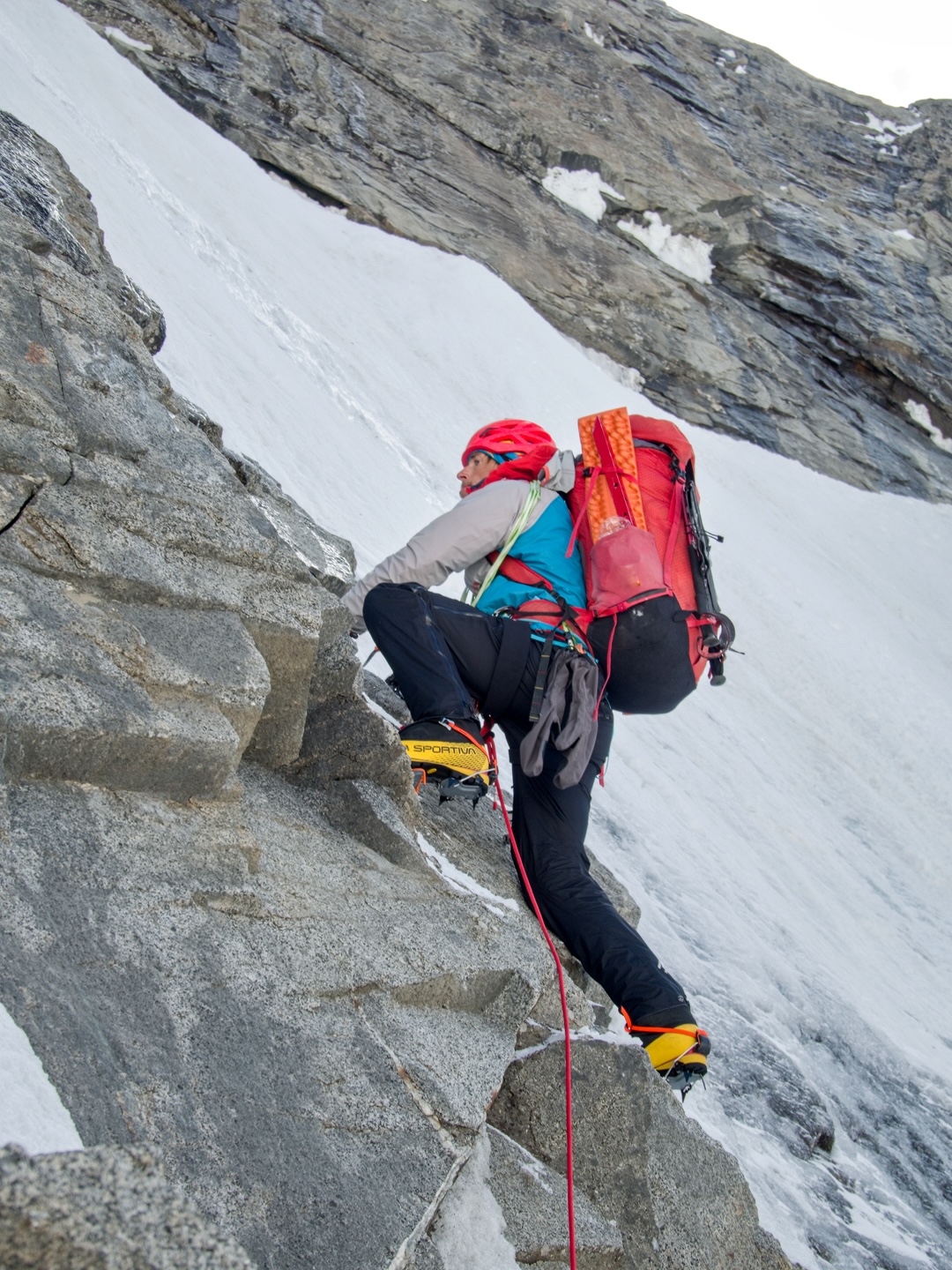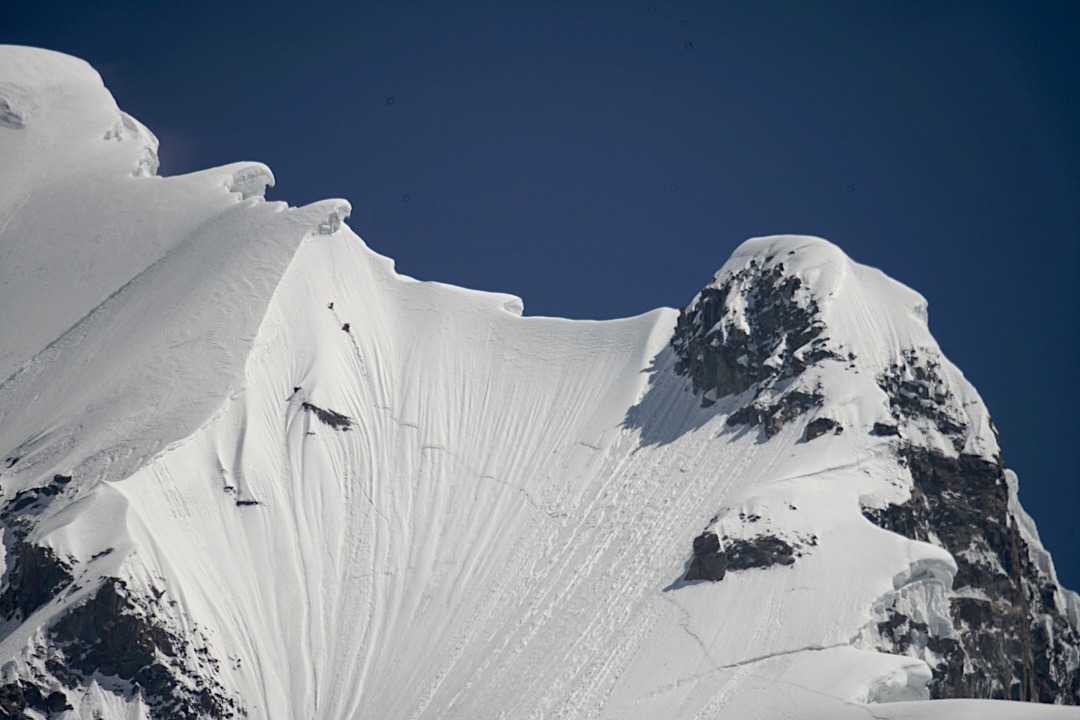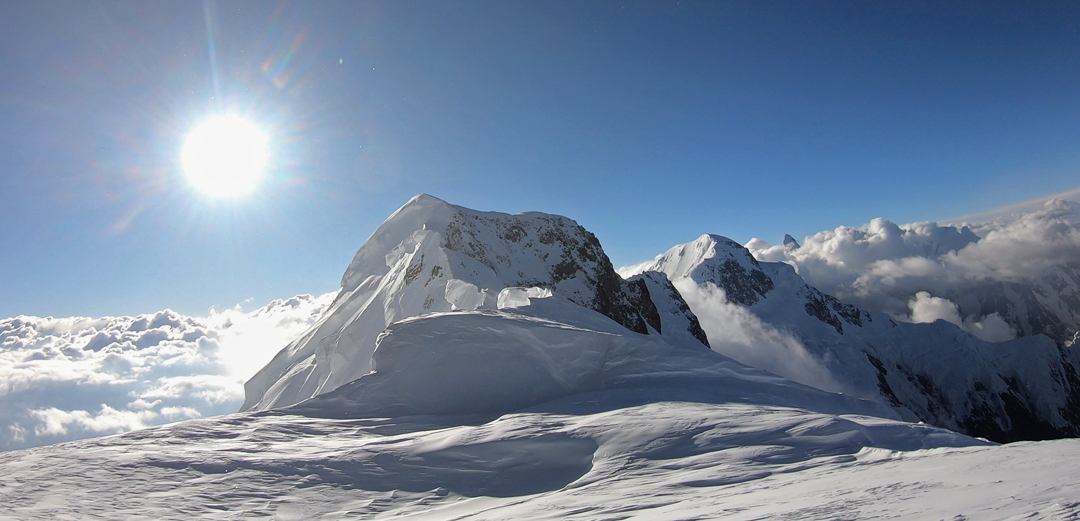Muchu Chhish, First Ascent
Pakistan, Karakoram, Batura Muztagh
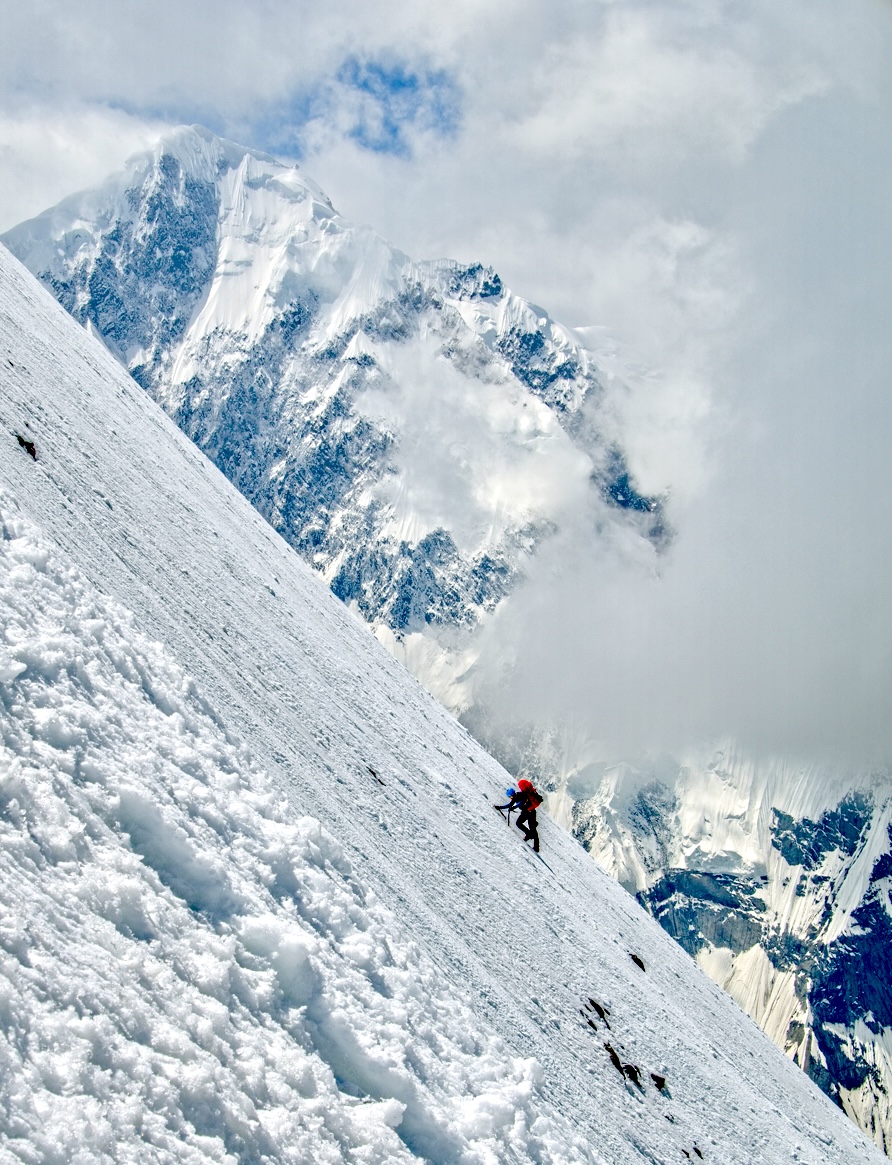
I had planned to visit Afghanistan’s Hindu Kush, but when this didn’t work out, Radoslav “Radar” Groh suggested we try Muchu Chhish (7,453m, 36°30’10”N, 74°32’49”E). The mountain had been a long-standing goal of our countryman Pavel Kořínek, who first took a team there in 2020, when he reached 6,300m (AAJ 2021). Kořínek also was part of two later Czech expeditions to Muchu Chhish: in 2021 when he reached 6,500m, and in 2023, when two of his team, Groh and Tomáš Petreček, reached around 7,200m (AAJ 2024). After a phone call to Pavel, the decision was made: Radar, Jaroslav “Banana” Bánský, and I would leave for Pakistan on June 6.
We planned to acclimatize around Bublimotin (a.k.a. Lady’s Finger, 6,000m), but I was ill, so we ended up moving to the Muchuhar Glacier, where we established base camp at around 4,000m. We would have to acclimatize there.
The line attempted by previous parties from this glacier followed the 1983 Polish-German route along the south spur of Batura V (7,531m) as far as the Batura main ridge. From there, the plan was to traverse to the east to reach Muchu Chhish. For acclimatization, we decided to climb the first part of this route and sleep at 4,600m, 5,400m, and 6,100m. We left base camp on June 25 and completed our goal, returning to base camp after three nights out. It wasn’t ideal acclimatization, but we didn’t have more time and the forecast promised that good weather would hold for the coming week.
On July 1, we again hiked up the rocky couloir leading to the glacier at 4,800m and followed it to 5,350m, where we spent the night. We had ascended around 1,400m from base camp, and it was only 10:30 a.m. when we stopped, but already unbearably hot.
The next day, we started climbing. The first pitches were rock and mixed to M4, and above it was ice—endless ice. We slanted up the west flank of the ridge to make Camp 2 at 6,300m, below a prominent serac. On the 3rd, we continued over more snow and ice. It was physically demanding, with a maximum angle of around 70°. In parts the snow was so deep that we used special snowshoes made by Auftriib that fit between the crampon and boot—often called ascent plates in North America and used by ski mountaineers—and without them we wouldn’t have been able to move higher.
It was a hard-earned 450m to our Camp 3 at 6,750m, from where a further 500m of elevation would take us to the main Batura ridge. The next day, using the ascent plates again and carefully finding a route around crevasses, Banana blazed trail throughout the day and brought us to 7,250m, just below the ridge, where we made Camp 4. The summit of Muchu Chhish was more than 1.5km to the east.
The following day, we gained the ridge and followed it over a few bumps to a large rock tower below a headwall and about 150m below the summit. Banana led, and at 10:20 a.m. on July 5 we reached the top, where we left a snow stake inscribed with our signatures.
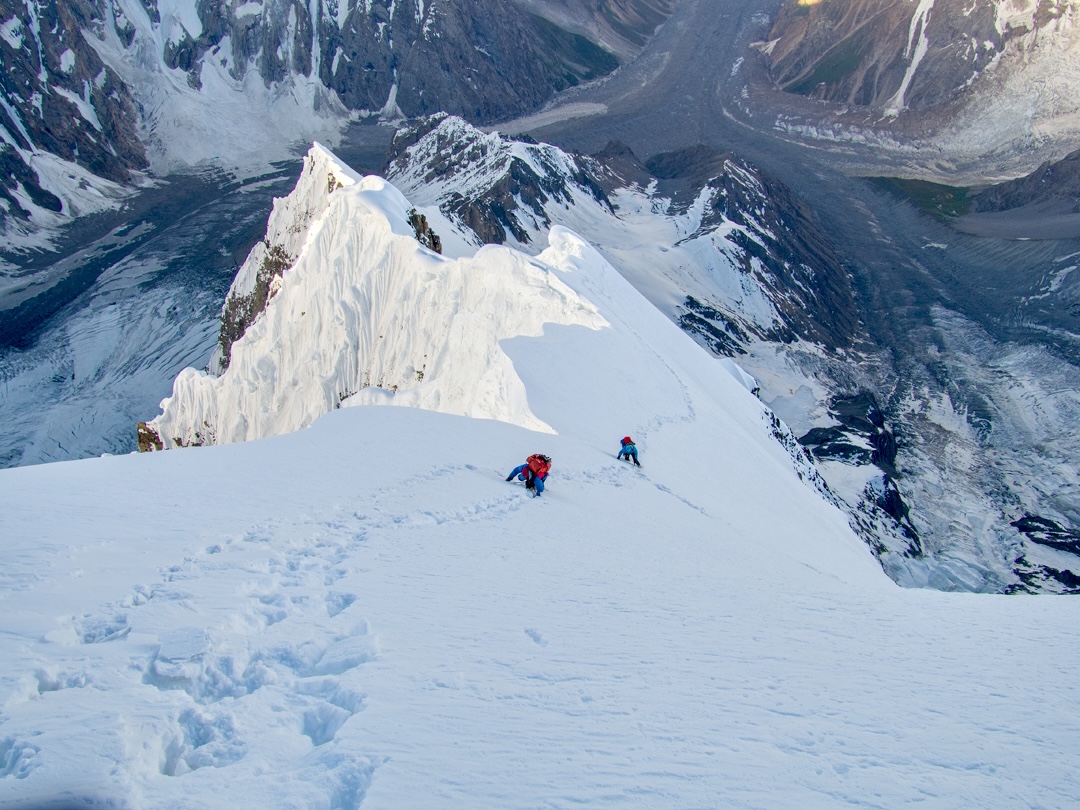
Our descent was hampered by decreasing visibility and wind-filled tracks. Often we had to climb back uphill with the little strength we had left. Luckily, we located the little rock corner that would lead down to the tent. We continued on autopilot, as we couldn’t find our steps. Fortunately, whenever I am climbing through this sort of terrain, I often look back to try and memorize the terrain below, and this helped me navigate through the crevassed area. Below 7,000m, the visibility improved and we continued easily to our 6,750m camp.
Leaving early the next morning, we descended 1,500m to the glacier, rappelling only 100m. It was mid-day and terribly hot. Avalanches were coming off the mountain, and even the glacier didn’t look safe. We awoke at base camp to a gloomy morning and began our descent to the Hunza Valley, accompanied by raindrops.
—Zdeněk Hák, Czech Republic
Editor’s Note: There has been debate over the status of Muchu Chhish, which was sometimes quoted as the highest unclimbed mountain in the world for which it was possible to get a permit. However, this claim depends on how a “mountain” is defined. Some suggest Muchu Chhish’s very low prominence and dominance make it barely a mountain and more a subpeak of the Batura chain. Regardless, until 2024, it was the highest named and unclimbed summit in Pakistan.


